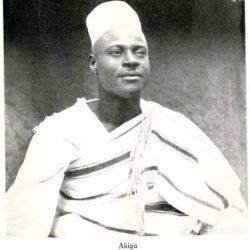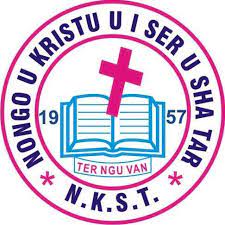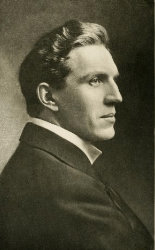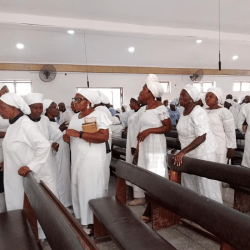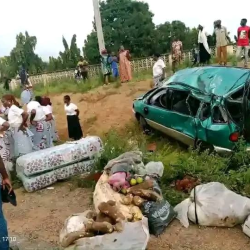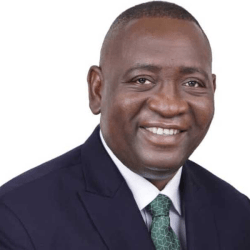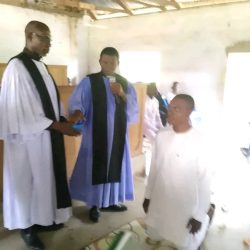Pastor J. E. Isholibo Saai (1911-1987), a member of the Tiv tribe, grew up in that part of Central Nigeria known as the Middle Belt, and more specifically as Benue Province.
The Gospel was first proclaimed to the Tiv in 1911, the year of Rev. Saai’s birth, and indeed this occurred in the village known as Saai, by missionaries from the Dutch reformed Church of South Africa. That year almost all of the Tiv area was still closed to foreigners. In 1912, permission was granted for missionary travel in certain parts of the tribal area.
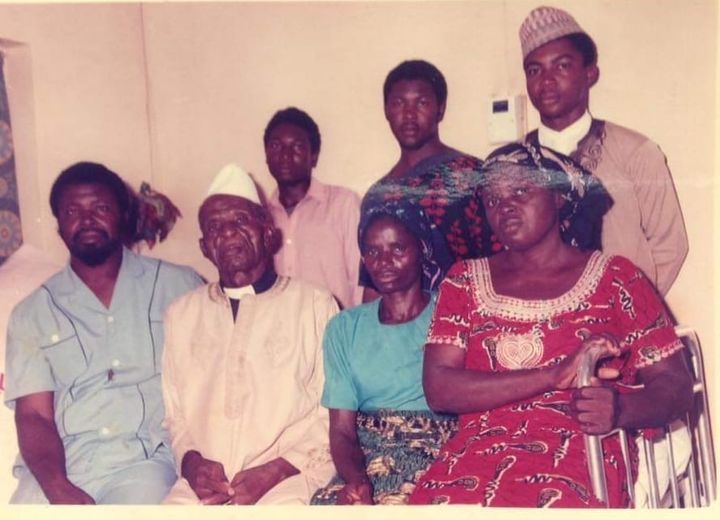
Tivland was the last area of consequence in Nigeria to be brought under British control.
Rev. Saai recounted that he understood nothing of the missionaries’ messages in his early years for they spoke only Hausa. As a boy he wanted to go to the school the missionaries had begun, but this was against his parents wishes, and he was beaten and harassed. “What I heard in the school was beautiful to me, and I began to understand some of the things of the Lord.” But after a time, the missionaries left Saai and the school life waned.
At the first insance, the Tiv did not respond to the Gospel with much enthusiasm. The first four baptism were recorded on December 30 1917, but within a year it was discovered that all four were found to be living in sin and were placed under censure.
After nearly nineteen years of Gospel proclamation the number of baptized adults stood at six.
When Isholibo was seventeen, his parents found a wife for him. Both his wife Kuver and his mother were later baptized. When Isholibo was 22, he began to hold services for the village children. Entirely on his own he began to study the catechism and to pray again. Three years later, he and others erected a building which served as both school and church – all of this without the knowledge or encouragement of the missionaries.
He was baptized in 1937 at the age of 26. Isholibo Saai entered the mission’s school for evangelists in 1938, successfully completed the training, and became an evangelist to his people in 1943.
In 1950 a decision was made to select four promising men to be trained to the pastorate with the proviso that they first complete Standard 6 before pastoral training could take place. Isholibo was among the four selected.
On October 4 1952, the first pastors’ class was inaugurated, and on July 25, 1956, the four were examined and accepted as being called to the ministry. Rev. Saai was ordained to the ministry at Apir on January 26 1957. Later he served at Harga, and completed his ministry in his home village of Saai.
On January 9, 1957, the Tiv Church (the Nongo U Kristu u ken Sudan hen Tiv, literally, the followers of Christ in the Sudan among the Tiv, and most commonly, the NKST) was officially established at Mkar with 1600 baptized members.
Rev. Saai’s gifts were soon widely recognized and he was appointed editor of the denominational periodical, Mkaanem in 1958.
As a fluent speaker of Hausa, he was often a delegate to ecumenical conferences where English and Hausa were utilized.
A monumental event for the NKST occurred in January of 1961 when the manuscript of the entire Bible in Tiv was sent to the British and Foreign Bible Society for publication.
At the end of 1960, there were thirteen congregations served by eight pastors.
The Tiv Church began to grow enormously. That same year some 3200 baptized members were recorded and church attendance reached 47,000.
In the next six years the number of congregations doubled and the number of pastors quadrupled to 32. By 1968, baptized members numbered 14,000 and attendance swelled to nearly 200,000. A genuine people movement was underway. Some analyst reported that the NKST was the fastest growing church in the world.
During the 1960’s missionaries from the Christian Reformed Churches of North America were invited into Tivland, and in 1961 the South African mission transferred all its ministries to the CRC mission, a branch of the Sudan United Mission. During these delicate negotiations, the missions often turned to Rev Saai for counsel. The NKST remained reformed in its confessional stance, and its world- and- life view promoted deed ministries in dozens of primary schools, medical dispensaries, and a large central hospital, teacher college, secondary school, leprosy settlement and orphanage. The Benue Bible Institute and the Reformed Theological College of Nigeria prepare evangelists and pastors.
Already in 1958, the NKST joined a larger grouping of evangelical denominations in Nigeria known to the Tiv as Tarraya or Fellowship of Churches of Christ in the Sudan. The acronym TEKAS was used as an abbreviation for the Hausa phrase Tarrayyar Ekklesioyoyin Kristi a Sudan. Saai was often sent as a delegate to these meetings and also was a fraternal delegate to the Reformed Churches of South Africa, the Synod of the Reformed Church of North America and the Synod of the Christian Reformed Church in North America, and the Reformed Ecumenical Synod (a council of Reformed Churches worldwide, which gathers every four years).
A man of regal bearing and genial nature, Isholibo Saai often served as chairman of the annual synod. In the councils of both church and mission, his views commanded respect and often became definitive. Among the two million Tiv his life and ministry continue to bear fruit.
Reference
Eugene F. Rubingh
Rubingh lived among the Tiv for ten years and later served as Executive Secretary of the Christian Reformed World Missions.
He ministers with International Bible Society in Colorado, Springs, Colorado USA.
